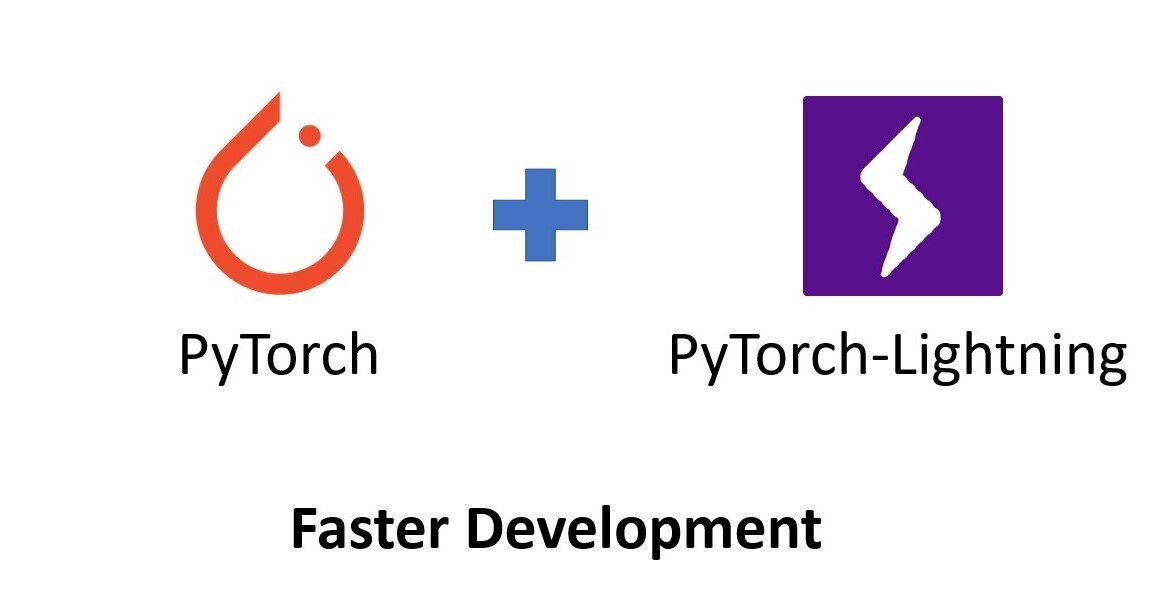PyTorch Lightning - Making Deep Learning Easier and Faster

As the field of artificial intelligence continues to advance, more and more developers are turning to deep learning frameworks to build advanced machine learning models. However, building these models can be challenging, time-consuming, and require a significant amount of expertise.
This is where PyTorch Lightning comes in. PyTorch Lightning is a lightweight PyTorch wrapper that simplifies the process of building, training, and deploying deep learning models. In this article, i will explore PyTorch Lightning in detail, including what it is, why it was created, and how it can help you build better deep learning models faster.
What is PyTorch Lightning?
PyTorch Lightning is an open-source PyTorch framework that provides a lightweight wrapper for PyTorch. The goal of PyTorch Lightning is to make deep learning easier to use, more scalable, and more reproducible. With PyTorch Lightning, developers can build advanced deep learning models quickly and easily, without having to worry about the low-level details of building and training these models.
PyTorch Lightning was created by the team at the PyTorch Lightning Research Group, which is a community-driven research group focused on making deep learning easier and faster. The framework has gained widespread adoption in the deep learning community due to its simplicity, ease of use, and ability to improve model scalability.
Why was PyTorch Lightning created?
PyTorch Lightning was created to address some of the challenges and limitations of building and training deep learning models using PyTorch. These challenges include:
- Reproducibility: Reproducing deep learning experiments can be challenging due to the large number of parameters involved. PyTorch Lightning provides a standardized way to build and train models, making it easier to reproduce experiments.
- Scalability: As deep learning models become more complex, they require more computational resources to train. PyTorch Lightning provides a way to distribute model training across multiple GPUs and machines, making it possible to train larger models more quickly.
- Debugging: Debugging deep learning models can be time-consuming and challenging. PyTorch Lightning provides a way to separate the model architecture from the training loop, making it easier to debug models and identify issues.
- Reusability: Building and training deep learning models can be a time-consuming process. PyTorch Lightning provides a way to reuse pre-built models and training loops, making it easier to build and train new models.
Features of PyTorch Lightning
LightningModule
PyTorch Lightning provides the LightningModule class, which is a standard interface for organizing PyTorch code. It separates the model architecture from the training loop and allows users to define the forward pass, loss function, and optimization method in a single module. This makes it easy to reuse code across different models and experiments.
Trainer
PyTorch Lightning provides the Trainer class, which is a high-level interface for training models. It automates the training loop, handling details such as batching, gradient accumulation, and checkpointing. It also supports distributed training across multiple GPUs and nodes, making it easy to scale up training to large datasets.
Callbacks
PyTorch Lightning provides a callback system that allows users to modify the training process at runtime. Callbacks can be used to implement custom logging, learning rate scheduling, early stopping, and other functionality.
LightningDataModule
PyTorch Lightning provides the LightningDataModule class, which is a standardized way to load and preprocess data for training. It separates the data loading and preprocessing code from the model code, making it easy to reuse data across different models and experiments.
Fast training
PyTorch Lightning uses the PyTorch backend, which provides fast and efficient training on GPUs. It also supports mixed-precision training, which allows users to train models with lower precision floating-point numbers to reduce memory usage and speed up training.
Differences between PyTorch and PyTorch Lightning

Code organization
In PyTorch, users must write their own training loop and organize the code for the model, data loading, and training in a custom way. In PyTorch Lightning, users define the model and data loading code in standardized modules, and the training loop is handled by the Trainer class.
Distributed training
In PyTorch, users must write custom code to enable distributed training across multiple GPUs or nodes. In PyTorch Lightning, distributed training is supported out of the box using the Trainer class.
Checkpointing
In PyTorch, users must write custom code to save and load checkpoints during training. In PyTorch Lightning, checkpointing is handled automatically by the Trainer class.
Mixed-precision training
In PyTorch, users must write custom code to enable mixed-precision training. In PyTorch Lightning, mixed-precision training is supported out of the box using the Trainer class.
Setting Up a PyTorch Lightning Project
Before i begin, make sure that you have PyTorch and PyTorch Lightning installed. You can install them using pip, as shown below:
pip install torch
pip install pytorch-lightning
Once you have installed these packages, you can create a new PyTorch Lightning project by running the following command:
mkdir my_project
cd my_project
touch main.py
This will create a new directory called "my_project" and a new Python file called "main.py". This file will be the entry point for our PyTorch Lightning project.
Defining a Model
To define a PyTorch Lightning model, i need to create a new class that inherits from the LightningModule class. In this example, i will define a simple linear regression model that predicts the output based on the input.
import torch.nn as nn
class LinearRegressionModel(pl.LightningModule):
def __init__(self):
super(LinearRegressionModel, self).__init__()
self.linear = nn.Linear(1, 1)
def forward(self, x):
out = self.linear(x)
return out
In the constructor of the class, i define the layers of the model. In this case, i define a single linear layer that takes one input and produces one output. In the forward method, i define how the input is processed by the layers of the model.
Implementing the Training Loop
Next, i need to implement the training loop. PyTorch Lightning provides a convenient interface for training the model, called the Trainer class. I can define the training loop by overriding the training_step method of the LightningModule class. In this example, i will train the model on a dataset of random data points.
import torch.optim as optim
class LinearRegressionModel(pl.LightningModule):
def __init__(self):
super(LinearRegressionModel, self).__init__()
self.linear = nn.Linear(1, 1)
def forward(self, x):
out = self.linear(x)
return out
def training_step(self, batch, batch_idx):
x, y = batch
y_pred = self(x)
loss = nn.functional.mse_loss(y_pred, y)
return {'loss': loss}
def configure_optimizers(self):
optimizer = optim.SGD(self.parameters(), lr=0.01)
return optimizer
In the training_step method, i define the forward pass of the model, compute the loss, and return a dictionary containing the loss. In the configure_optimizers method, i define the optimizer used to optimize the model parameters. In this example, i use stochastic gradient descent (SGD) with a learning rate of 0.01.
Evaluating a PyTorch Lightning Model
To evaluate a PyTorch Lightning model, i need to define an evaluation step function that takes in a batch of data and returns the model's predictions. I can also define a separate function to calculate the metrics i am interested in.
Here's an example of an evaluation step function for a classification problem:
def validation_step(self, batch, batch_idx):
x, y = batch
y_pred = self.forward(x)
loss = F.cross_entropy(y_pred, y)
preds = torch.argmax(y_pred, dim=1)
acc = accuracy(preds, y)
self.log_dict({'val_loss': loss, 'val_acc': acc}, prog_bar=True)
return loss
In this example, i pass a batch of data and the batch index to the function. I then calculate the model's predictions using the forward function and calculate the cross-entropy loss between the predictions and the ground truth labels. I also calculate the accuracy of the model's predictions using a separate function called accuracy. Finally, i log the validation loss and accuracy using the log_dict function.
To calculate the metrics i am interested in, i can define a separate function that takes in the model's predictions and the ground truth labels:
def calculate_metrics(preds, y):
acc = accuracy(preds, y)
precision = precision_score(y.cpu(), preds.cpu(), average='macro')
recall = recall_score(y.cpu(), preds.cpu(), average='macro')
f1 = f1_score(y.cpu(), preds.cpu(), average='macro')
return acc, precision, recall, f1
In this example, i calculate the accuracy, precision, recall, and F1 score of the model's predictions using functions from the sklearn.metrics module.
Running Evaluation
Once i have defined our evaluation step function and metrics function, i can run evaluation on a PyTorch Lightning model using the trainer.test method:
trainer.test(model, datamodule=datamodule)
In this example, i pass in the PyTorch Lightning model and the data module used for testing. The trainer.test method will run the evaluation step function on the test data and calculate the metrics i defined earlier.
Conclusion
PyTorch Lightning is a powerful and efficient framework for training and deploying deep learning models. Its modular design and clean abstractions make it easy to write concise and maintainable code. With its automatic optimization and streamlined API, PyTorch Lightning simplifies the process of building and training complex models, freeing up valuable time and resources for researchers and practitioners.
I highly recommend PyTorch Lightning to anyone who is interested in developing machine learning models. Whether you're a seasoned expert or just getting started, PyTorch Lightning offers an intuitive and flexible platform for designing and implementing state-of-the-art models with ease. With its extensive documentation, vibrant community, and active development, PyTorch Lightning is sure to become an indispensable tool for machine learning practitioners and researchers alike. So give it a try and see for yourself why PyTorch Lightning is quickly becoming the go-to framework for deep learning!
